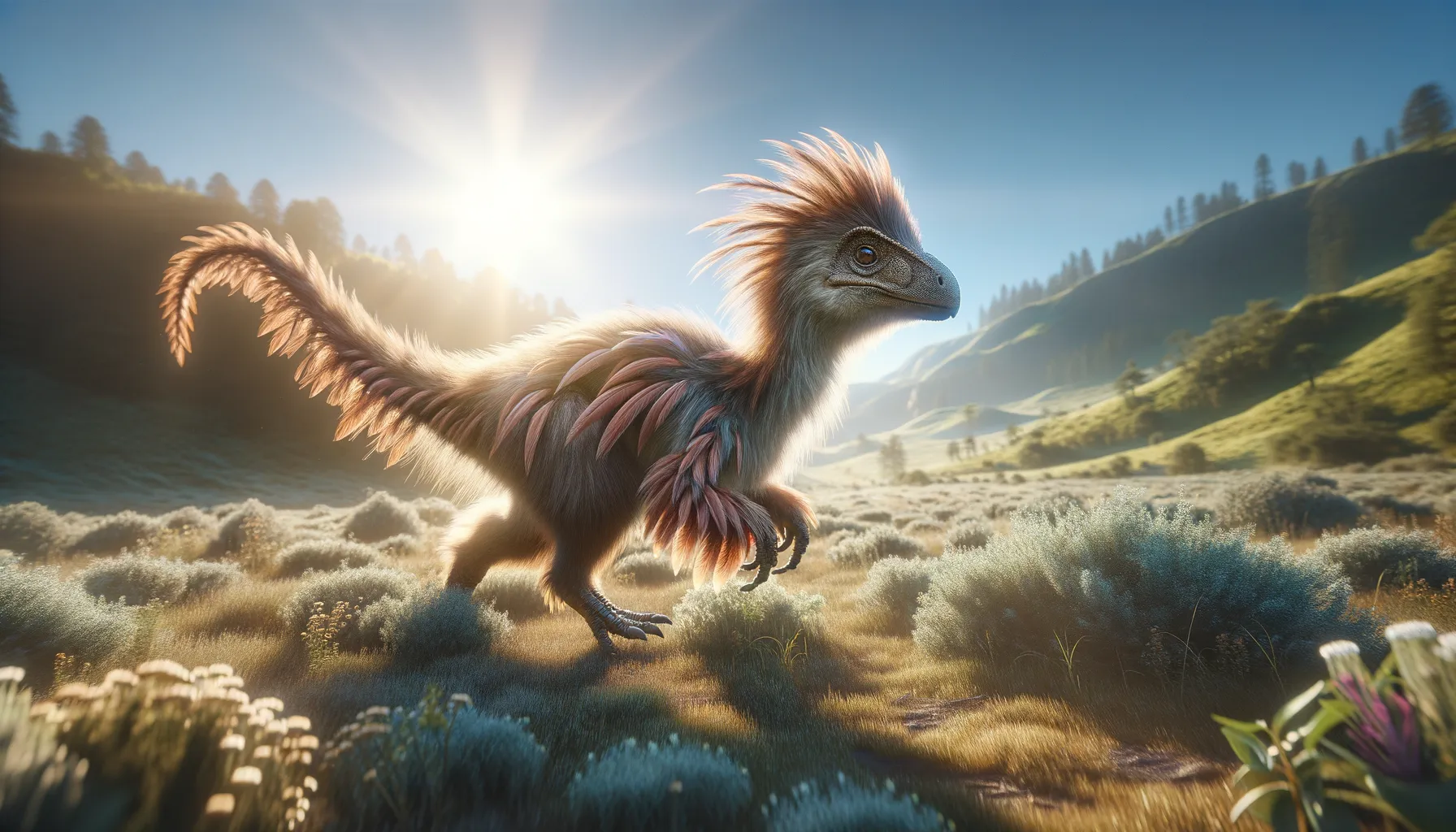
Kulindadromeus
Discover the tiny feathered wonder of Siberia!
Period
Jurassic
Length
Measured approximately 1.5 meters in length.
Height
Stood about 0.5 meters tall at the hips.
Weight
Weighed around 1 kilogram, similar to a large chicken.
Kulindadromeus was a small, feathered dinosaur that walked on two legs. Its discovery in Russia provided groundbreaking evidence that feathers were common in dinosaur species, not just close relatives of birds. This plant-eater adapted well to its herbivorous diet, inferring details about its life habits. Its body structures suggest it could efficiently browse for food in its Jurassic habitat.
Diet
Kulindadromeus was a herbivore, feeding on low-lying plants and shrubs. Its teeth were well-suited for chewing tough vegetation.
Hunting
As a herbivore, it likely foraged rather than hunted, carefully selecting various plants and leaves. It used its keen sense of sight to navigate dense plant life for food.
Environmental challenges
Kulindadromeus faced challenges like varying climates and seasonal food scarcity. Adaptations such as feather-like structures may have helped it insulate against cooler temperatures. It also needed to avoid predators with its small size, relying on agility and camouflage.
Speed
It was not very fast, likely moving at a modest speed due to its size and limb structure.
Lifespan
Exact lifespan unknown, but likely proportionate to small herbivorous dinosaurs.
First discovery
Discovered in Siberia, Russia, in 2014, giving insights into feathered dinosaurs.
Fun Facts
- Kulindadromeus was a small, plant-eating dinosaur that lived during the Jurassic period about 160 million years ago.
- This dinosaur was discovered in Siberia, Russia, and its name means 'Kulinda runner,' referring to the area where it was found.
- Kulindadromeus had both scales and feathers, showing that feathers were not limited to the ancestors of birds.
- It's believed that the feathers on Kulindadromeus were used for insulation rather than for flying.
- The discovery of Kulindadromeus provides evidence that feathers might have been common among all dinosaurs.
- Kulindadromeus was about the size of a turkey, making it one of the smaller dinosaurs we know about.
- Its discovery has helped scientists understand more about the evolution of feathers and their purposes in dinosaurs.
Growth and Development
Kulindadromeus showed clear growth stages, with young ones resembling miniature versions of adults. Feathers might have played a role in thermoregulation during growth. Embryonic studies indicate rapid development within eggs to prepare for a potentially harsh launch into the environment.
Habitat
It lived in lush, forested regions of Jurassic Siberia. The habitat was rich in vegetation, providing ample food sources but also required navigating a dense environment. Water bodies like rivers or streams might have been nearby, offering drinking sources.
Interaction with other species
Kulindadromeus likely coexisted with other herbivorous and carnivorous species. It may have formed small herds, aiding in protection against predators. Competition for resources with similar-sized herbivores was a part of its survival.
Natural lifespan
Its natural lifespan is assumed to be around 10 to 20 years.
Reproduction
Like many dinosaurs, it reproduced by laying eggs, possibly in nests within protected areas. Its parental involvement post-hatching is unknown, but hatchlings might have been self-sufficient quickly. The incubation period was aligned with other small dinosaurs, a few months at most.
Social behaviour
It might have exhibited some social behavior, like moving in groups for protection. Such behavior would deter predators and aid in gathering food. Communication could have involved visual cues and simple vocal sounds.
Fossil locations
Kulindadromeus fossils were primarily found in the Kulinda River region in Siberia, Russia. This area has unveiled significant details about the species' feather structures. The well-preserved fossils have provided unparalleled insights into the evolutionary history of feathered dinosaurs.
